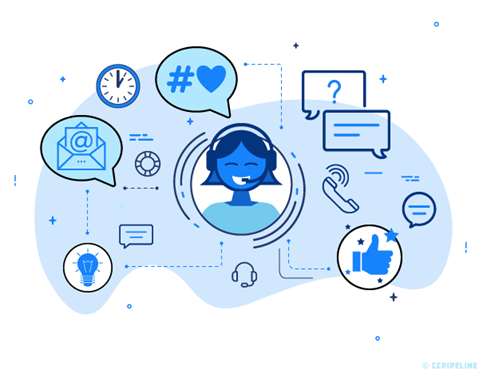Introduction
We all have the experience of having great expectations when buying something and then being disappointed. A new car of a renowned brand. A beautiful suit or handbag. Dinner in a restaurant with a great chef. While we are ready to pay well for the quality we are anticipating, the deception comes with poor customer service. Long waiting times, a bad response if something irregular happens, or poor performance if we want something to be changed compared to the standard delivery. When we acquire a software application (either a SAAS (Software–As–A -Service) or have a tailormade solution for our business processes, customer service is just key. Here are the main things to look out for and to expect from a good software provider when it comes to customer service and support.
Quality in software–customer service and support
If you have found a software application that fits your business needs well, it is important to realize that the software comes with a whole environment to assist you as a customer to use it well and with no issues. In fact, very good software may come with terrible customer support, leaving you in trouble for a long time when there is something you do not understand. I remember acquiring a top-notch product in the USA, to only find out that its support organization in Europe was not working at all: 10 different phone numbers in different countries, and none of them were working or could answer our pressing questions!
The need for good customer service starts right already with your acquisition process.
Clarity: while you are still in the middle of the procurement process, it should be easy to get clarity on the precise features, legal arrangement (contract conditions), and the “total cost of ownership” that the application is going to give you. It should be easy to find out what additional costs may be incurred and what the exact scope of the contract is, to avoid any unpleasant surprises.
Implementation: how easy is it for your organization to use the software? Is your new vendor going to assist you with your data migration (or digitalization, in case you did not use IT for this process before)? Is there training of personnel? Is their help in the adaptation of your business processes to use the software smoothly? Do their consultants come on-site to help you do all the changes and is that expensive?
Professional help desk: a software vendor who takes customer service seriously will have a professional helpdesk that professionally processes all incoming calls and uses this information to improve its services. It has a smooth escalation model for more complex questions and problems. As a customer, you will have the confidence that your problem is being dealt with by the right person at all times. Professional service personnel are always polite and take you seriously.
Frequently asked questions: for the most common and returning questions about the use of the software, simple and clear web pages and instruction videos should be available to help you out, in particular in the early stage of using a new application.
Easy contact: it should be easy to get in contact with the right person to discuss questions or problems. Currently, a lot of applications have in-built chat functionality in the software or on their website. These “Chatbots” may or not be able to communicate with you properly, and should quickly lead you to an actual human to deal with your matter. It should be easy to find support for all of your users.
Response time: when an issue occurs, and you are stuck using the software, your vendor should be able to solve the issue quickly regardless of the cause of the problem. “Downtime” can be defined as the number of minutes or hours per month that the software is not working, which obviously should be as limited as possible. If caused by maintenance, this should be announced and planned carefully by the vendor in such a way that business continuity is guaranteed.
Some software companies even have a feature where you grant the service employee to “take over your screen” to see what is wrong and help you fix the issue quickly.
Continuous improvement: while you do not want the software you acquired to change constantly, it is important that feedback from customers is regularly used to improve the software. This may include new features that are very useful, fixing small bugs, or improvement of features that are causing confusion for the users. Good customer service implies that your vendor listens to you and is constantly willing to improve its product.
Authors: Diana van der Stelt (Member, Institute of ICT Professionals Ghana) and Anthony Yeboah Asare, Trinity Software Center in Kumasi, sales director and quality engineer
www.trinitysoftwarecenter.com | info@trinitysoftwarecenter.com





